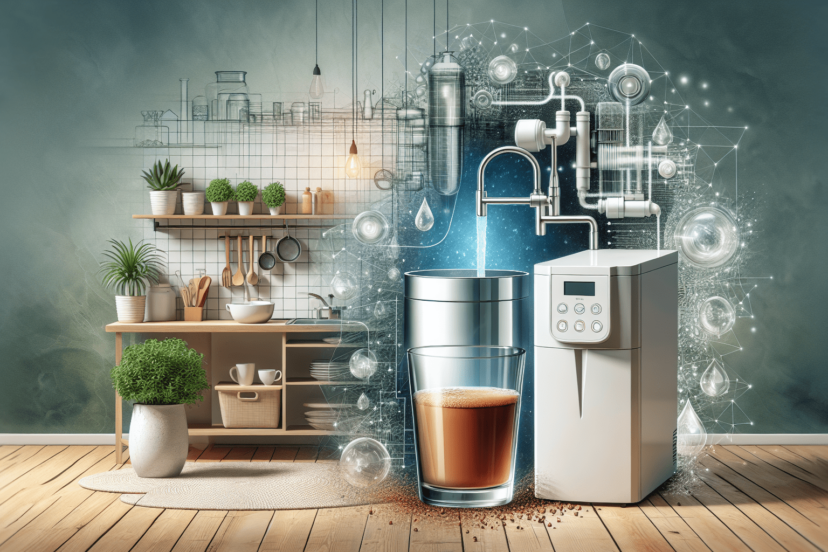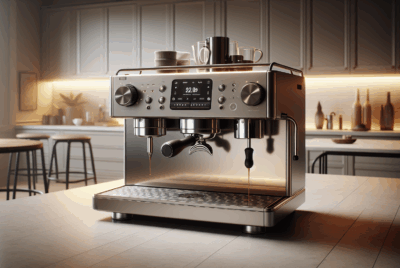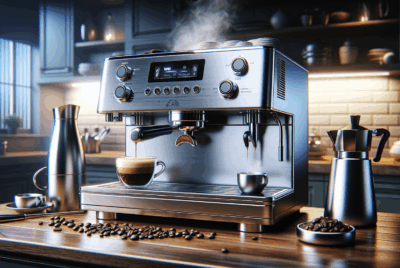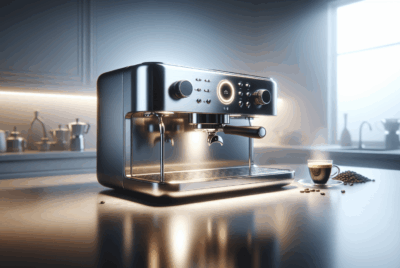Inform Me About Water Softeners and Espresso Machines
As an Amazon Associate, I earn from qualifying purchases, at no additional cost to you. Disclaimer
Have you ever wondered about the role water plays in brewing the perfect cup of espresso or why some people prefer to use water softeners for their coffee machines? There’s a world of difference between regular tap water and softened water, and understanding it can elevate your espresso-making experience. Whether you are an avid coffee enthusiast or simply trying to optimize the function of your home appliances, it’s important to grasp how water quality affects your espresso machine and your drink.
Click Here to Get Brewing Tips & Tricks
Understanding Water Quality and Coffee
Water makes up about 98% of your espresso. It’s not just a vehicle to extract flavors—it actively interacts with the coffee compounds, affecting the taste. Thus, water quality is critical for achieving a balanced and flavorful espresso shot. But what exactly is water quality, and why does it matter so much?
The Components of Water
Most water contains minerals like calcium, magnesium, and sometimes iron, along with impurities or additives like chlorine. These components are what define water quality. Here’s a quick breakdown of how each can impact your espresso:
- Calcium and Magnesium: These minerals contribute to water hardness. While too much hardness can affect the machine and the coffee flavor, small amounts help with extraction.
- Chlorine: Often added to water for disinfection, chlorine can impart an unwanted taste to your coffee.
- Iron: While less common, iron can sometimes be present in water and impact the taste and appearance of your beverage.
Why Water Quality Matters
Different minerals can enhance or detract from your espresso’s aroma and flavor. Water that is too hard or contains excessive impurities can lead to a bitter or overly acidic shot. On the other hand, water that’s too soft might not extract enough flavor, resulting in a weak or flat coffee taste. This balance is why many coffee lovers pay close attention to the quality of water they use.
The Role of Water Softeners
Now that we know why water quality is significant, let’s dive deep into water softeners and how they impact both your espresso machine and the coffee it brews.
What are Water Softeners?
Water softeners are devices or additives used to reduce the hardness in water. They function by removing calcium, magnesium, and other metals that cause water hardness. There are multiple methods through which water softening can occur:
- Ion Exchange Systems: These are the most common types, where hardness ions are exchanged with sodium or potassium ions.
- Salt-Free Water Conditioners: Unlike ion exchanges, these do not remove hardness ions but, instead, neutralize them so they don’t form scale.
- Reverse Osmosis Filters: These systems use a semi-permeable membrane to remove various elements, including hardness.
Benefits of Water Softeners for Espresso Machines
When used with espresso machines, water softeners offer a range of benefits:
- Prevents Scale Build-Up: Over time, mineral deposits from hard water can accumulate in espresso machines, causing blockages and inefficiency.
- Extends Machine Lifespan: By preventing scale build-up, softened water helps maintain your espresso machine, reducing the need for frequent repairs or replacements.
- Improves Coffee Taste: Softened water, when well-balanced, can enhance the extraction process, offering you a delicious cup each time.
Are There Any Drawbacks?
While water softeners offer benefits, there are a few drawbacks to consider:
- Added Sodium: Ion exchange softeners add sodium to water, which might not be desirable for those monitoring sodium intake or preferring pure water.
- Potential Over-Softening: If water is too soft, it might not extract coffee flavors adequately, affecting the richness of the espresso.
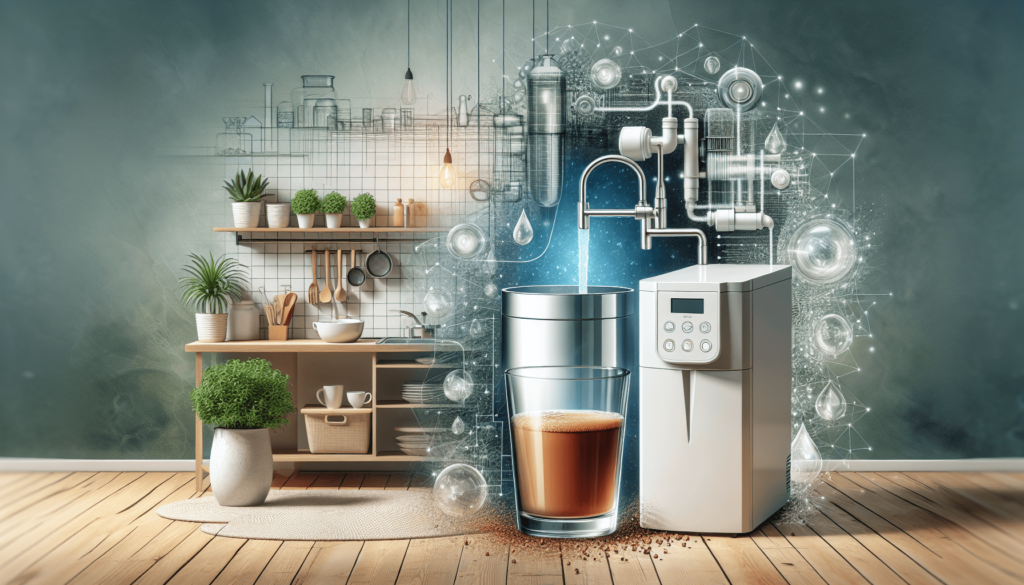
Click Here to Transform Your Morning Routine
Espresso Machines: Types and Water Requirements
Espresso machines come in various types, each with specific water needs. Understanding these requirements will help you decide how to manage water quality best.
Types of Espresso Machines
Different machines offer various features and require distinct water quality considerations. Here’s a look at the most common types:
- Manual Espresso Machines: Operated by hand, these machines give you control over the pressure but might need more frequent cleaning if using hard water.
- Semi-Automatic Machines: These offer a balance between control and automation but require regular descaling to maintain performance.
- Automatic Machines: With pre-programmed settings, these machines are great for convenience but are more susceptible to damage from scale build-up if water quality is poor.
- Super-Automatic Machines: These do everything from grinding beans to brewing coffee. Maintaining water softness is crucial to avoid machine malfunction.
Matching the Machine with the Right Water
Different machines might benefit more from softened water, while others can operate well with slightly harder water, aiding extraction.
- Manual and Semi-Automatic Machines: More tolerant to slightly hard water but require regular descaling.
- Automatic and Super-Automatic Machines: Benefit most from softened water due to complex internal components.
Finding the Perfect Balance
Achieving the perfect water softness is crucial for an optimal espresso experience. It’s all about balance, ensuring that the water isn’t too hard or too soft for your machine type and taste preference.
Testing Water Hardness
To achieve that sweet spot, start by testing your water hardness:
- Water Hardness Test Strip: These strips are simple to use and provide a quick reading of your water’s mineral content.
- Digital Test Kits: For precise measurements, digital kits offer more detailed insights into mineral levels.
Adjusting Water Hardness
Depending on your readings and machine type, you might:
- Use a Water Softener: For very hard water, this can adjust the mineral levels effectively.
- Mix with Distilled Water: Mixing tap and distilled water can achieve a balanced mineral content.
- Add Mineral Drops: If water is too soft, adding mineral drops can enhance extraction without affecting taste negatively.
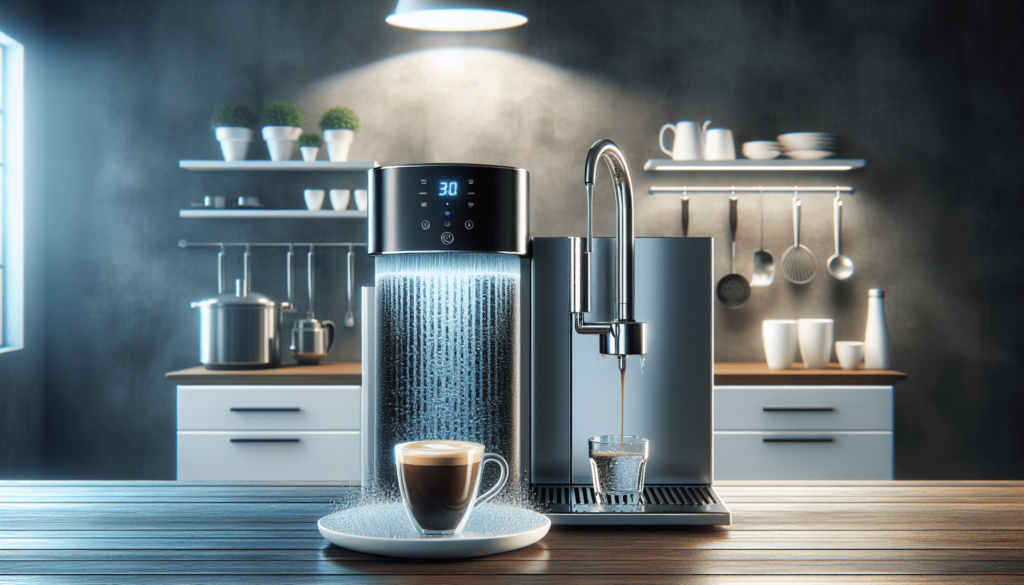
Click Here to Start Your Coffee Journey
Practical Tips for Maintaining Your Espresso Machine
Maintaining your espresso machine is key to ensuring longevity and excellent performance, regardless of water quality.
Regular Cleaning and Descaling
- Daily Rinsing: Wipe down your machine daily and empty the drip tray to prevent any residue build-up.
- Monthly Descaling: Even with softened water, run a descaling cycle monthly to keep your machine in prime condition.
Monitor and Manage Water
- Use Filtered Water: If possible, use filtered water each time to reduce impurities while maintaining necessary minerals.
- Replace Filters: For machines with built-in water filters, change them as recommended by the manufacturer.
Stay Informed About Settings and Adjustments
- Check User Manual: Familiarize yourself with your machine’s recommended water quality settings.
- Adjust Settings: Tweak the grind size, pressure, and water temperature for personal taste preferences that align with your water type.
Enhancing the Espresso Experience Beyond Water
While water quality plays a significant role, consider these additional factors for an even more enjoyable espresso experience.
Coffee Bean Selection
High-quality, fresh beans complement water quality to produce a balanced flavor profile. Consider:
- Bean Origin: Different regions produce distinct flavors—experiment to find your favorite.
- Roast Level: Light, medium, or dark—you’ll find varied tastes and strengths with each.
- Freshness: Freshly roasted beans are crucial for a flavorful and aromatic espresso.
Proper Grinding
The grind size must match your machine type. Too coarse, and your coffee might be under-extracted; too fine, and it could be over-extracted, causing bitterness.
Ideal Brewing Temperature and Pressure
Ensure consistent brewing by checking that your espresso machine maintains the correct temperature (around 195-205°F or 90-96°C) and pressure (around 9 bars).
Conclusion
Navigating the world of espresso and water isn’t just about science—it’s a personal journey towards crafting your perfect cup. Understanding water hardness, leveraging water softeners when needed, and maintaining your espresso machine can significantly enhance your brewing experience. Remember, experimenting with new techniques and balancing variables can lead you to discover new flavors and richness in your daily coffee ritual.

